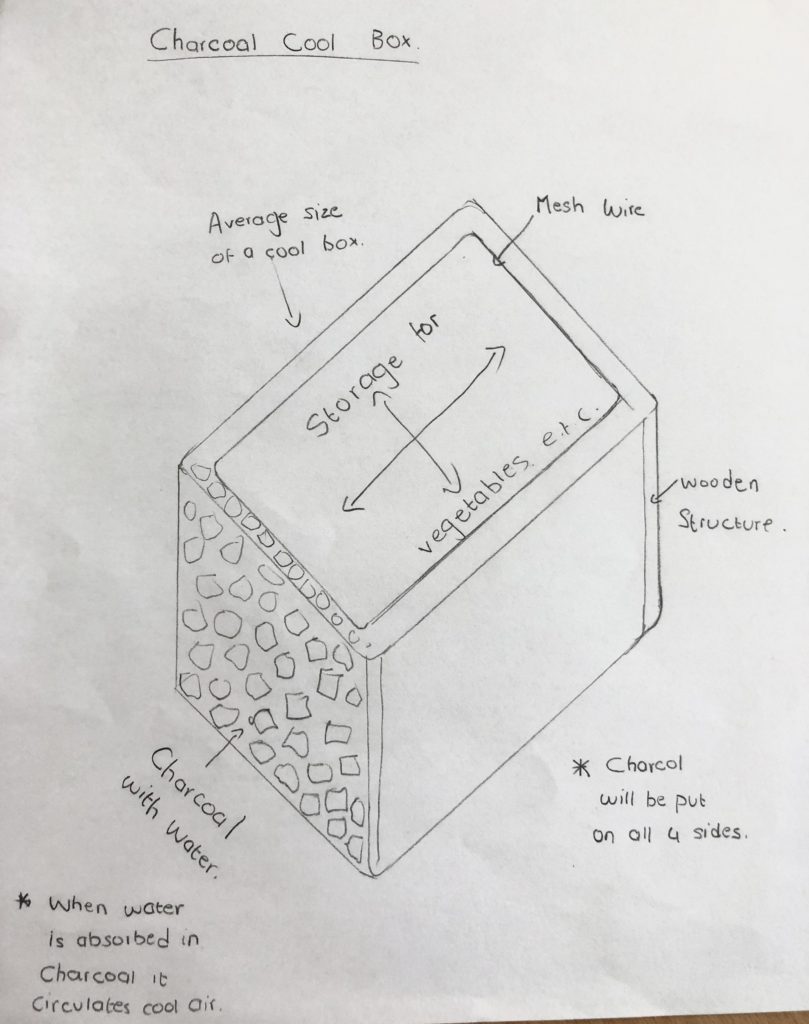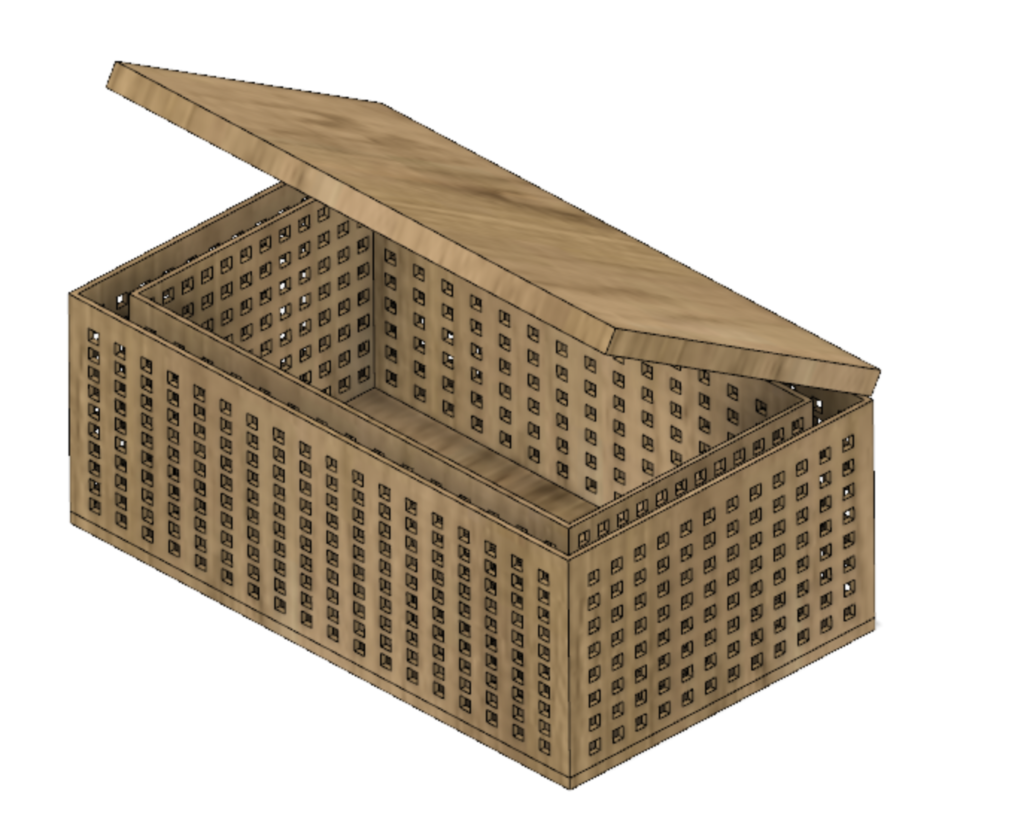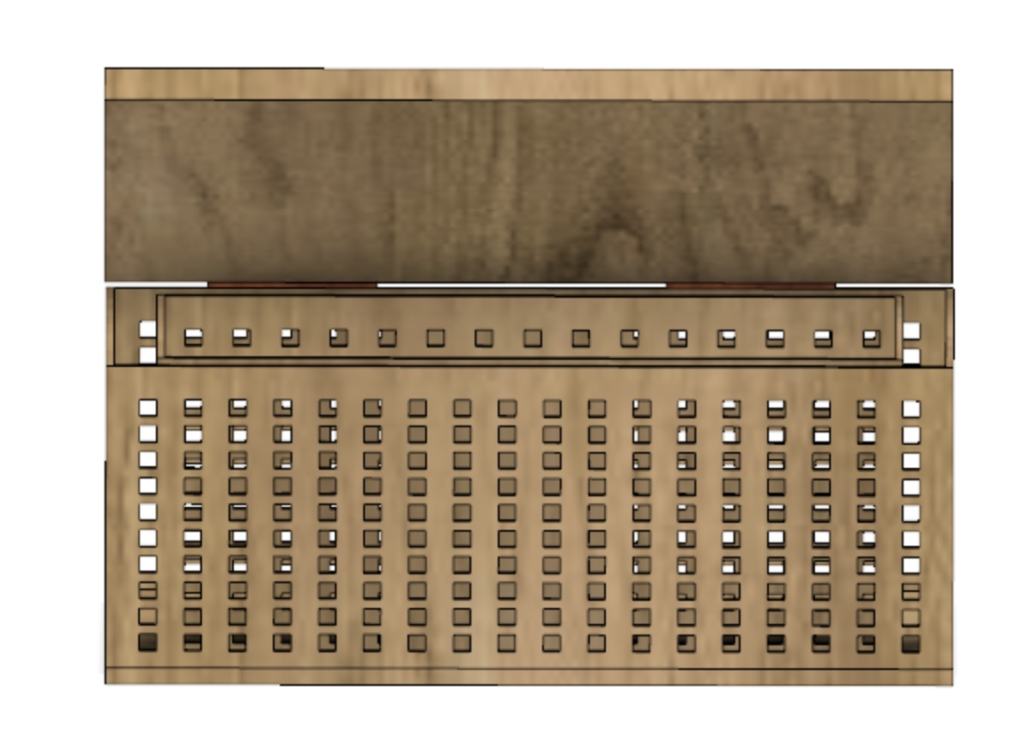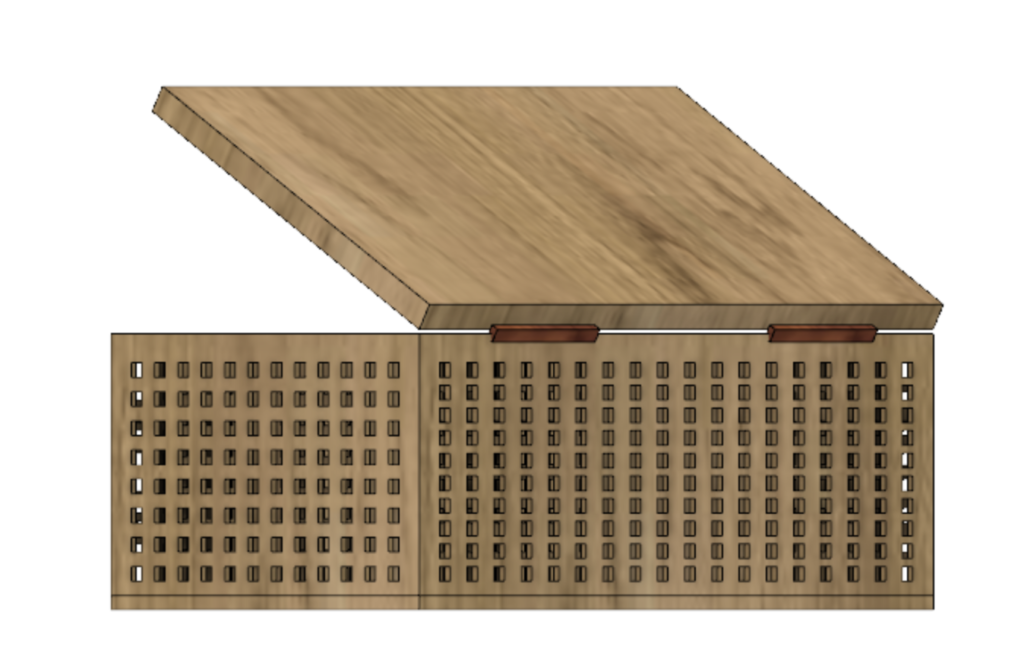Off-grid Refrigeration
The Design Challenge
During transportation, produce is not stored in a cool dry place causing it to go bad and therefore it is wasted. This is a major problem in Nairobi so I decided to design a low cost “Charcoal Cool Box” that can be used by almost all families not having to worry about the cost. The non-electric cool box is also portable therefore allowing easy use anywhere, for example, the local boda boda riders (bike transport) can attach the Charcoal cool box to the back rack of their back and use to deliver produce and different food items that need to be kept cold for the journey.
Summary of Research
- In hot climates where electricity is unavailable, refrigeration of food is a developmental need. In Sudan, for example, tomatoes will only last 2 days in the hot sun.
- Preservation of crops through refrigeration can help with hunger and starvation in the developing world by keeping foods fresh longer.
- In areas with no electricity, refrigeration is particularly challenging and has lead to the design of a variety of heat-driven refrigeration devices, including evaporative coolers.
- While these devices are not typically capable of maintaining temperatures of 2-3 degrees Celsius, they can be significantly cooler than ambient temperature, and even moderate drops can significantly extend the shelf life of produce.
- For example, when housed using a similar evaporative cooling device, the life of tomatoes can be extended from 2 to 20 days.
- Evaporative cooling has an added benefit of increasing the air moisture content, preventing food from drying out and further extending shelf life.
My Project Description: Non-Electric Refrigeration
- My idea is to use charcoal to build my product. A charcoal refrigerator is a type of cooling device, it keeps things like produce fresh and avoids them from spoiling. A charcoal cooler uses the principle of evaporative cooling to maintain a cool interior temperature for refrigeration and food preservation.




